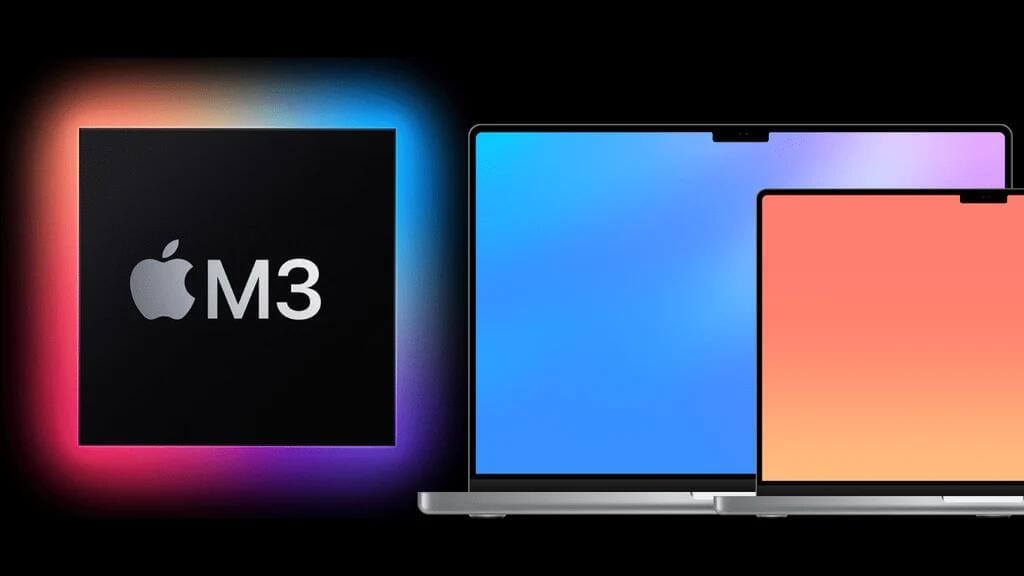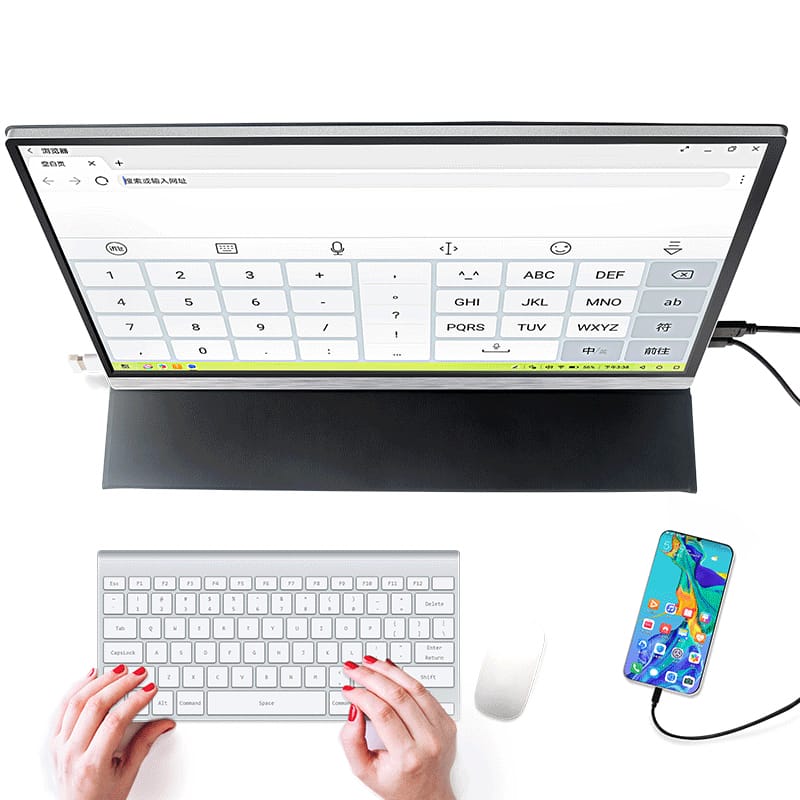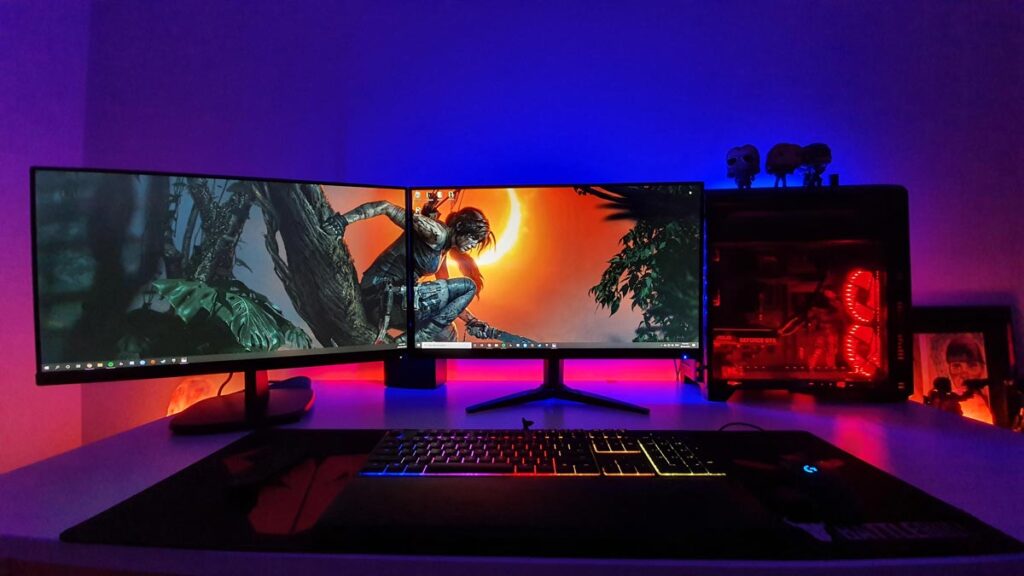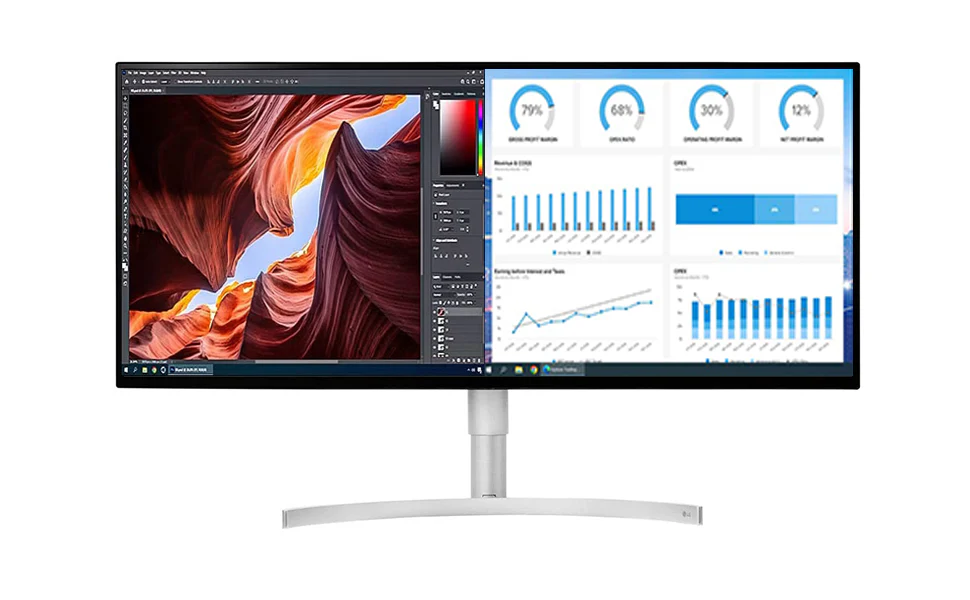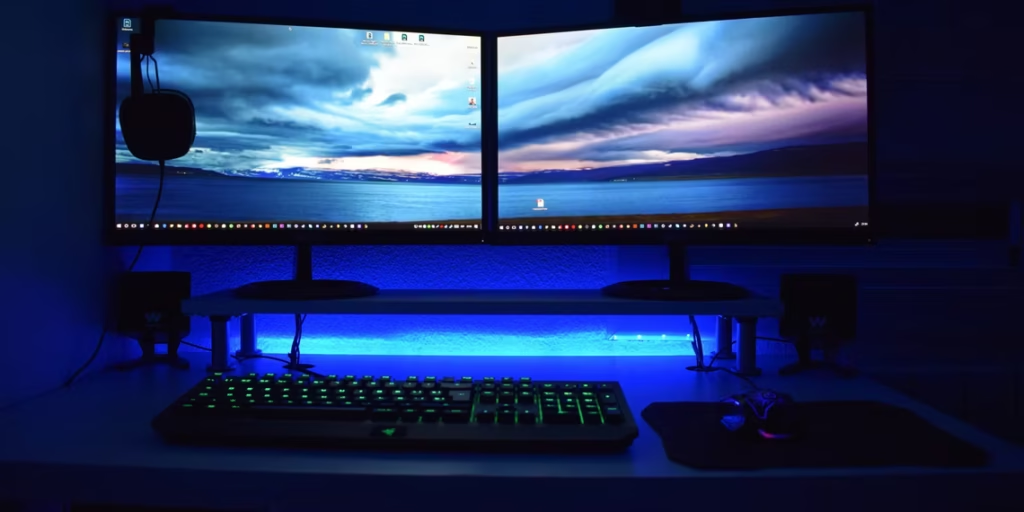
In today’s digital age, dual-monitor setups have become a common sight, especially for people who need to boost productivity or enjoy an enhanced entertainment experience. Connecting two monitors to a single CPU (central processing unit) can seem like a daunting task if you’re unfamiliar with the process, but don’t worry! Whether you’re working from home, gaming, or simply want more screen space, setting up dual monitors is easier than ever.
Why Use Two Monitors with a Single CPU?
Before going into the technical details, it is essential to know why you’d want to attach two monitors to your CPU. There are lots of reasons you may want to consider getting a second monitor:
Increased Productivity: You can multitask better with two monitors. Imagine having an inbox open on one screen and working on documents or spreadsheets on the other. You will be spending much less time flipping between tabs, which means you can work faster.
Enhanced Gaming Experience: A dual-monitor setup for gamers means a whole new dimension. You can use one screen for gaming while the other is reserved for chat windows, streaming, or monitoring system performance.
Improved Visual Workspace: If you are a designer, video editor, or content creator, having more screen space makes it much easier to manage different workflows without feeling crowded.
How to Connect Two Monitors to One CPU?
The process of connecting two monitors to a single CPU depends on a few key factors, such as the type of graphics card your computer has, the ports available on your monitors, and the operating system you’re using. Let’s break it down into steps.
1. Check Your Graphics Card
The first thing you want to do before attempting to connect two monitors is to see if your graphics card supports multiple display outputs. Most modern graphics cards and integrated graphics can support two monitors, but you want to know what ports you have available.
- Dedicated Graphics Card: In case you have a dedicated graphics card, then there are a number of HDMI, DisplayPort, or DVI ports already present on the back of your PC. Just make sure that at least two video output ports are available.
- Integrated Graphics: If your CPU has integrated graphics, then your motherboard might support dual displays. In fact, most of the modern integrated graphics will support dual monitors, such as Intel’s UHD or Iris Plus graphics.
2. Get the Right Cables
After you’ve verified that your graphics card supports multiple monitors, you’ll need to ensure you have the right cables to connect them. Following are some common video cables:
- HDMI: This is one of the most common types of cables for modern monitors and PCs. If both monitors and your CPU have HDMI ports, this usually is the best option.
- DisplayPort: A slightly higher quality connection that can support high resolutions and refresh rates. It is ideal for professional workstations, gaming setups, and high-performance monitors.
- DVI/VGA: These can still be utilized with some older monitors or GPUs, but they are indeed being phased out in the current world by HDMI and DisplayPort.
Based on whatever monitor(s) and CPU ports you have, you will want to purchase a cable that matches them. However, if your monitors/CPUs don’t quite match up—for instance, one monitor only utilizes HDMI, and the CPU does DisplayPort—you might make use of an adapter.
3. Connect the Monitors to the CPU
Great, you have the appropriate cables; now connect each monitor to the respective port on your CPU. If both monitors use the same type of cable and port, this should be pretty simple:
Take one end of the cable and attach it to the monitor, attaching the other end to the graphics card of your CPU or to the motherboard in case you are using integrated graphics.
Repeat this for the second monitor. If the CPU ports are not the same as those of the monitors, use the appropriate adapters to ensure compatibility. You can use, for example, an HDMI-to-DisplayPort adapter to make compatible ports match.
4. Set Up the Displays in Your Operating System
Once you have connected your monitors, setting them up becomes the next task. All major OSes have supported dual monitors, but the way of setting them up has been a little different with every OS.
- Under Windows: Right-click on the desktop and click on Display Settings. In the settings, under Multiple Displays, you have a drop-down menu for setting up the displays: Duplicate, Extend, or Show Only on 1/2. For dual monitors, select Extend to increase your workspace area. Click Apply to save changes.
- On macOS: Go to System Preferences and click on Displays. Here, you can place the monitors by dragging them in the display setup window to match your physical setup.
- On Linux: Depending on the distribution, you can use either Display Settings or xrandr commands to set up your dual-monitor configuration.
5. Adjust Display Resolution and Orientation
Once you have set up two monitors, you will probably want to set the resolution and orientation for each display. For example, if one of your monitors is wider than the other, you may want to adjust the resolution to make the text and images more similar between the two screens.
You can adjust the resolution under Display Settings in Windows.
Resolution settings in macOS are available in the Displays menu. Secondly, in the Display option, set both monitors to a desirable resolution, especially when the monitors are high-definition, or when you do work that demands graphics intensity.
Tips on How to Optimize Your Dual-Monitor Setup
The following are a few additional tips for taking full advantage of having a dual-monitor setup:
- Ergonomics: Both screens should be at eye level with adjusted viewing angles for reduced stress from neck and eye muscles.
- Monitor Alignment: Physically align your monitors as they are in your settings for a seamless workflow.
- Cable Management: Keep those cables tidy! Use cable clips or raceways to hold them in place and off your desk.
- Monitor Calibration: Color settings should be calibrated on both screens to make the colors appear the same. This is quite important for designers, photographers, and video editors.
Troubleshooting Common Dual Monitor Problems
If you encounter some problems with a dual-monitor setup, check the following:
- Display Not Detected: Sometimes, one of the monitors is not detected. Try unplugging it and then plug it again. If this doesn’t work, check your cables and ports for a proper connection.
- Display Flickering: Ensure that the drivers for your graphics card are updated. Display flickering may indicate a problem with compatibility or updated software.
Final Thoughts
Whether you want to enhance your productivity, take a whole new experience of gaming, or simply enjoy a better comfortability while working, hooking two monitors up with a single CPU is going to change the game. You just need to understand your graphics card, select the correct cable, and set it up for easy use.
You’ll want to make sure that, with the right tweaks and tips, you make use of the screen estate as much as possible, thereby easing your workflow. So if you’re ready to level up on your work or gaming rig, a dual-monitor configuration just might be that upgrade you’ve been waiting for. Now, grab those additional monitors, follow these steps, and you’re ready for that smooth and productive dual-display experience!
